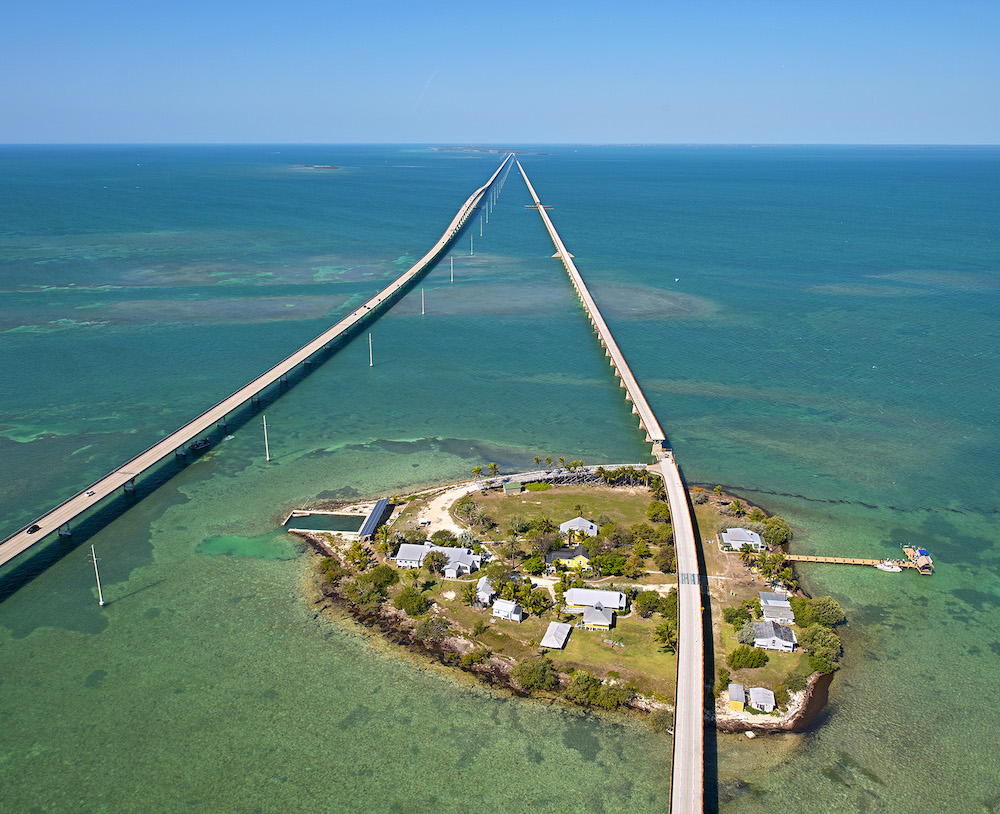Kelly McKinnon, executive director of the Pigeon Key Foundation, has lived for 14 years on the tiny historic island beneath the Middle Florida Keys’ Old Seven Mile Bridge. Currently the personable 40-year-old is one of only four full-time island residents.

Kelly McKinnon studied marine science in college and is now a dedicated advocate for the environment who hopes to inspire Pigeon Key visitors to share his passion.
Kelly, who studied marine science in college, first landed on the island as the foundation’s education director after a professor told him about the job. He feels very fortunate to live in the tranquil place where nighttime activities include fishing, snorkeling and kayaking.
The 5-acre Pigeon Key was a camp for laborers building the 1900s-era Florida Keys Over-Sea Railroad, conceived by Henry Flagler to connect the Keys with the Florida mainland. Today it has a museum showcasing the railroad’s fascinating history and quaint yellow residential cottages.
Though Pigeon Key is now reachable only by ferry, the Old Seven Mile Bridge — closed for restoration for three years — is to reopen to pedestrians and visitors for recreational activities and trolley service to the island by March 2022.
Kelly’s goals include ensuring that the island “is in tiptop shape when the bridge reopens. We’re building Pigeon Key into the cultural attraction that it can be.”
Keys Voices: When did you first come to the Florida Keys and why?
Kelly McKinnon: With my father, as a kid on a fishing trip. We passed by Pigeon Key a couple of times. I caught a real nice African pompano aboard the Time Out sportfishing boat docked in Key West’s Historic Seaport. I certainly had no idea how a single fishing trip could change the trajectory of my life.
KV: What aspects of the Keys environment or way of life matter most to you?

Kelly considers himself very fortunate to live on Pigeon Key, where leisure activities center around enjoying the waters surrounding the island.
KM: We get to live and work in such a wild environment. Much of my day and what I accomplish are often dictated by weather, tides and geography. I also enjoy our small-town atmosphere and being able to reach out to a community of friends who are always willing to help each other out.
KV: Who or what inspired you to become passionate about respecting and protecting the Keys’ natural world?
KM: My father, an avid fisherman who taught me and my three brothers to appreciate the outdoor world, played the biggest role. He always had us on a boat or in the woods.
KV: How does that passion influence your work or profession?
KM: Each day I’m fortunate enough to be in a position to make a difference in the physical environment where I live. I’m also able to teach and, hopefully, inspire others to do the same through programs available at Pigeon Key.
KV: What are some of the ways, personally or through your work, that you connect with and/or help protect the local environment and unique lifestyle?
KM: Pigeon Key’s marine science center is the biggest way we connect with and help our environment. Our overnight marine science programs, inspiring the next generation, reach nearly 5,000 student days per year. We’ve also made significant improvements to our local environment through capital projects and partnerships. We took the island solar in 2013, reducing our carbon footprint and the need to burn diesel by nearly 90 percent. We’re teaming up with West Palm Beach–based MANG to plant over 1,000 new mangroves on Pigeon Key to help preserve its shoreline and improve water quality throughout the Keys. Also, Pigeon Key Foundation has a partnership with Bonefish & Tarpon Trust, allowing us to trap fish larvae to determine bonefish spawning patterns. And Valdosta University students work with us to study ways of growing natural coral faster.
KV: What keeps you energized, challenged and focused on your path?
KM: Pigeon Key’s education programs and historic tours allow me to see firsthand the difference our staff makes in the lives of students and visitors. Kids who show up from all backgrounds and locations — and who often at first refuse to swim out of fear — are usually the same students we can’t get back on the boat at the reef due to their excitement. They often ask how they can become interns or pursue a life of conservation. It’s amazing to see that transformation and excitement.
KV: What do you hope your positive environmental actions will accomplish?
KM: Through projects like mangrove restoration, we see shoreline protection and improvement in our local waters. I hope we can inspire the next generation to discover new and innovative ways to preserve our environment.
KV: What’s your favorite natural or eco-friendly activity in the Keys?
KM: My favorite is still offshore fishing. There’s just something about being out there, no land in sight, humming along when that reel starts to scream. All your senses heighten. It feels very primitive to me and I’ve yet to find another feeling that compares.


